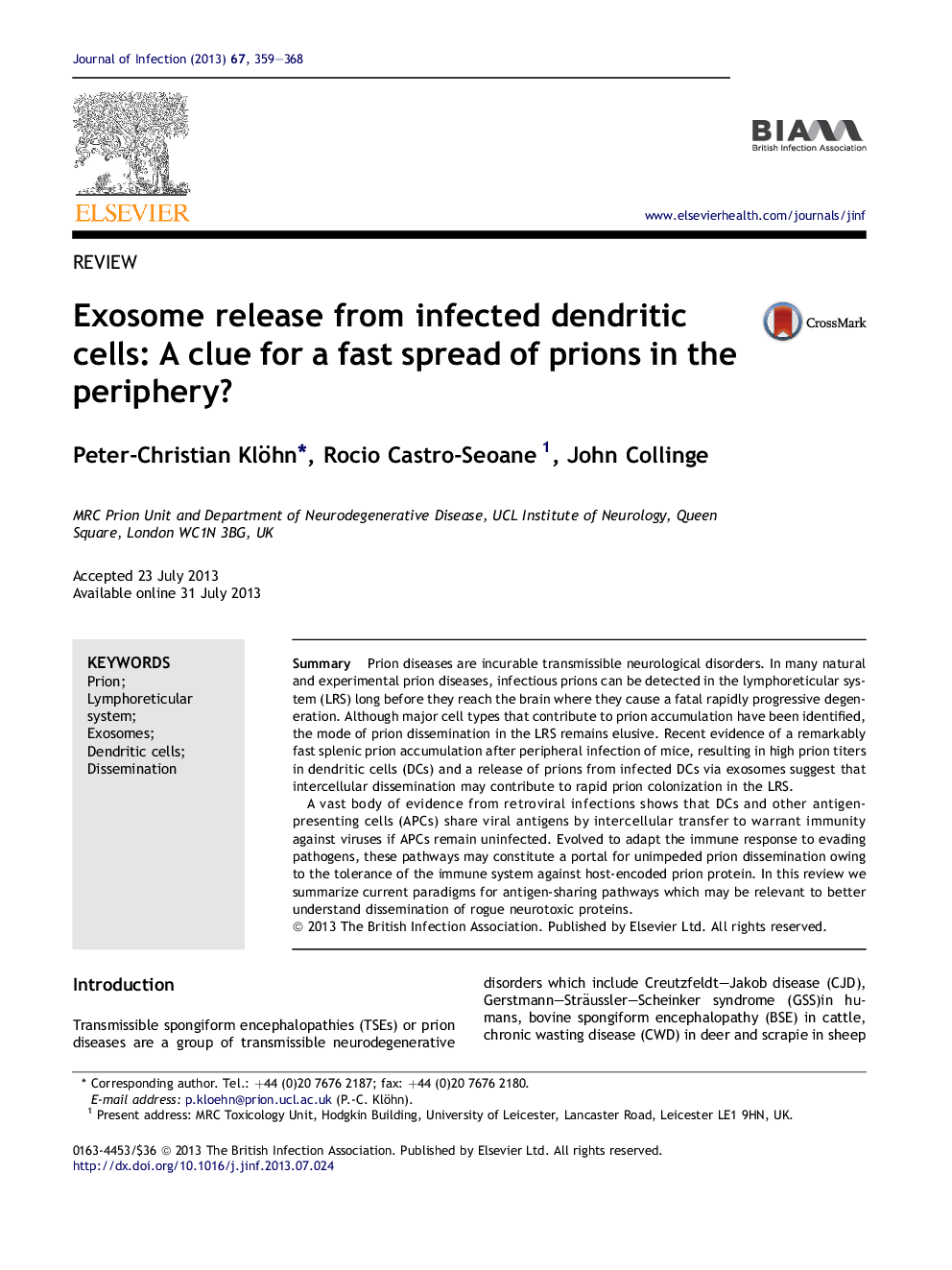| Article ID | Journal | Published Year | Pages | File Type |
|---|---|---|---|---|
| 3374640 | Journal of Infection | 2013 | 10 Pages |
SummaryPrion diseases are incurable transmissible neurological disorders. In many natural and experimental prion diseases, infectious prions can be detected in the lymphoreticular system (LRS) long before they reach the brain where they cause a fatal rapidly progressive degeneration. Although major cell types that contribute to prion accumulation have been identified, the mode of prion dissemination in the LRS remains elusive. Recent evidence of a remarkably fast splenic prion accumulation after peripheral infection of mice, resulting in high prion titers in dendritic cells (DCs) and a release of prions from infected DCs via exosomes suggest that intercellular dissemination may contribute to rapid prion colonization in the LRS.A vast body of evidence from retroviral infections shows that DCs and other antigen-presenting cells (APCs) share viral antigens by intercellular transfer to warrant immunity against viruses if APCs remain uninfected. Evolved to adapt the immune response to evading pathogens, these pathways may constitute a portal for unimpeded prion dissemination owing to the tolerance of the immune system against host-encoded prion protein. In this review we summarize current paradigms for antigen-sharing pathways which may be relevant to better understand dissemination of rogue neurotoxic proteins.
